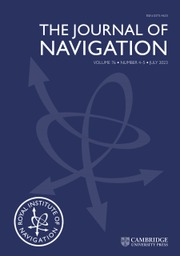No CrossRef data available.
Article contents
The Selection of Stars for Astronomical Navigation
Published online by Cambridge University Press: 18 January 2010
Extract
Nature has provided few bright stars and these are unevenly distributed in the sky. Even for air navigation it is necessary to use stars fainter than the first magnitude. There is then a choice which rapidly widens as the limiting magnitude is decreased. Brightness is not the sole criterion; distributipn is also of importance. In choosing a number of stars for use in astronomical navigation, no two people can be expected to give precisely the same weight to small variations of brightness and distribution; there thus arise different selections for similar purposes. The navigator, however, expects that the star he knows and observes will be catered for in such lists; he cannot be expected to remember that a particular star (no fainter and perhaps even brighter than neighbouring stars) is in one list but not in others. Any rule which seeks to include all stars brighter than a given limiting magnitude results in too long a list and an uneven distribution. There is thus a strong case for the selection of a list of stars, to which permanent names and numbers can be attached, which can be used for all purposes of astronomical navigation.
- Type
- Research Article
- Information
- Copyright
- Copyright © The Royal Institute of Navigation 1951


